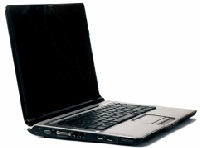What to Do if Water Damaged Computer Hard Drive
Many times over and over I have received calls from clients panicking that their computer was flooded (submerged) in water and they have no working backup to their precious valuable data. These clients range from a mom with her baby pictures and iTunes to a government office. Never the less, time and time again, many of them seem to try the old method of dry it out and maybe it will work. This is the furthest thing from the truth with hard drives. Water and impurities that get into the drive can destroy the data when it is dried on the drive’s platter and the drive spins up for the first time with obstructions on the platter. This will turn your data to dust!
Here is what should be done:
1: Never attempt to power up potentially wet electronic devices (NEVER!)
2: Do not attempt to power up potentially wet electronic devices.
3: Do not attempt to wipe or clean a drive or any storage media of debris, mud, soot, etc. This could cause additional damage to the drive or it’s circuitry.
4: Do not attempt to dry out the drive or media in any way!
5: Place the media in a plastic bag with an airtight zip enclosure. If the drive is wet, we want it to remain wet. Hard drives are not hermetically sealed. Water, mud and debris typically enter the mechanism. Once the drive is dried out, debris and contaminated water may crystallize on the platter surfaces causing corrosion.
6: To properly ship a wet drive, place it in a container that will keep it damp and protect shipping material from getting wet. Wet boxes can break apart during transit and cause further damage to the drive.
7: If the drive is in an external enclosure, do not remove the drive from the enclosure.
8: Do not use off-the-shelf utility software programs on water-damaged drives.
9: Unplug all electronic devices from outlets, surge protectors and battery back up systems before power is restored.
Getting your data back, safely and the right way:
Not all data can be recovered conventionally (slaving it to another computer to copy data off). When the drive is mechanically dead, you will want to contact a trusted and experienced recovery service. Drive Savers Data Recovery is well known for this and many more reasons, from everyday people, to Hollywood, to highly sensitive data of the Government, they serve very well.



 Removing virus’ can be about as fun as pulling splinters. Sounds exciting doesn’t it? That is why preventing from getting a virus is always the best method. So if your here and you have a virus, first we recommend that you head over to Grisoft and purchase
Removing virus’ can be about as fun as pulling splinters. Sounds exciting doesn’t it? That is why preventing from getting a virus is always the best method. So if your here and you have a virus, first we recommend that you head over to Grisoft and purchase  Before considering any recommendations below, please remember if you have data on your laptop that is important to you, then you should have a backup copy of that data before attempting to any repair work. RCCS will not be responsible for any damages or lost of data with any suggestion or recommendation below. End-User assumes all risk.
Before considering any recommendations below, please remember if you have data on your laptop that is important to you, then you should have a backup copy of that data before attempting to any repair work. RCCS will not be responsible for any damages or lost of data with any suggestion or recommendation below. End-User assumes all risk.
